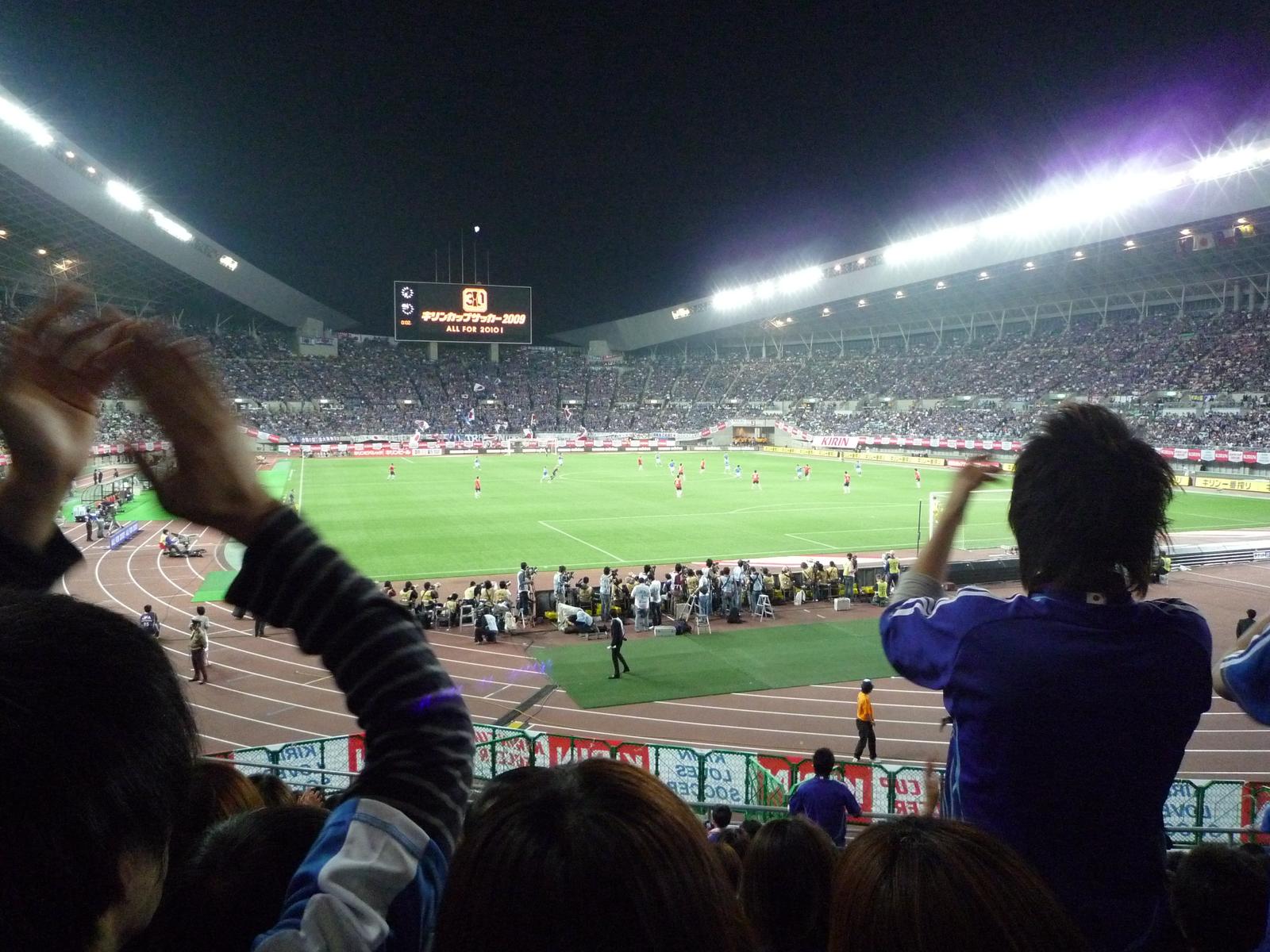
Originally from the UK, Sean Carroll works as a football journalist in Japan, covering the J.League and the Japanese national teams.
Your browser does not support the audio element.
This audio is generated by AI, so pronunciation and expressions may not be fully accurate. The narration is only in English.
From Football Fan in England to Football Journalist in Japan
Growing up on the south coast of England in the seaside town of Brighton, Carroll was drawn to football from a young age, enjoying the sport both as a player and a supporter. It was the 1990s, and the local team Brighton & Hove Albion was still far from its current Premier League success with star players like Mitoma Kaoru. What captivated Carroll instead was the irrepressible force of Alex Ferguson’s Manchester United.
While he may have been immersed in all things football, Carroll had never given Japanese football, or indeed Japan, a second thought until a rather serendipitous introduction in 2007. “My university girlfriend was Swiss Japanese,” he explains. “And when we were planning our holidays that summer, she suggested a trip to Tokyo. I’d never even considered going to Japan, but I thought―why not? I went in as a blank slate, with absolutely no expectations or prior knowledge.”
Alongside his first encounter with Japan and its culture, Carroll attended a few Japan Professional Football League (J.League) games out of curiosity about the state of his favorite sport in the country. He has especially vivid memories of the match he watched between Urawa Red Diamonds and Gamba Osaka. “We’d been to watch Chelsea play Manchester United just before we left England, so my standards were high at the time,” he explains. “But the level of play in Japan was far higher than I’d expected. And there was a great atmosphere in the stadium too. Great―but also very different from England.”

Sean enjoys the unique atmosphere of Japanese stadiums. Photo: PIXTA
All of this intrigued Carroll so much that he decided to move to Japan after university with the intention of staying just a couple of years to research and write a book on football in Japan. He arrived in 2009, began learning Japanese, and soon found that a year or two would not be enough. Becoming a football journalist in Japan was not something he had imagined possible.
“I really just fell into it,” he laughs. “I happened to meet Stuart Larman (known for his development work for FIFA and the Asian Football Confederation), who had seen one of the first pieces on Japanese football I had published. He introduced me to some Japanese colleagues who worked in the Japanese football industry, and before I knew it, I was going to games, interviewing players and coaches, writing articles―and slowly but surely, I forged out a career covering football here.”
As the years and football seasons rolled on, Carroll amassed the knowledge and perspective he needed to finally write the book on Japanese football that had brought him to Tokyo in the first place. Between the Lines: Navigating the World of Japanese Football was published in English in 2023, having come out the previous year in Japanese. “Players and fans aren’t just happy to be taking part in the World Cup anymore,” states Carroll on the opening page, regarding the rising expectations of the national teams. What follows is both a celebration of how far the game has come in Japan and a fair critique of what might be holding it back.
Encouraging Pride in Local Teams is the Key to Success
Tokyo is home to three J.League football clubs: FC Tokyo, Tokyo Verdy, and Machida Zelvia, which all currently play in the J1 division, the top tier of Japanese professional football. While all three teams have loyal fan bases who fill the stands at home games and large contingents who even travel to away games, the fact remains that no Tokyo team has yet won the J.League title. FC Tokyo came close in 2019, finishing second behind their rivals from the neighboring Kanagawa Prefecture, Yokohama F. Marinos.
“Yeah, it’s very interesting,” says Carroll. “I think part of the issue is that because Tokyo is so big, it is difficult for clubs to appeal to people in the entire city, and they should instead try to establish themselves within their local regions. If you look at London, for example, there is no team called London FC. You’ve got Chelsea, West Ham, Arsenal, Tottenham―the list goes on and on. So I think the way forward for football in Tokyo is for clubs to focus on their specific areas of the city, to try and appeal to fans’ sense of local pride and encourage them to support their closest teams.”
Carroll points to Machida Zelvia as a shining example of local football pride. The club, based in the city of Machida in the relatively rural west of Tokyo, began as a grassroots team competing in local and regional leagues before earning promotion to the Japan Football League (JFL), the highest level of amateur football in Japan. Incredibly, Zelvia managed to break through into the top tier of J1 in 2024, even going on to challenge for the title that season.
“I hope we see other teams in Tokyo aim high like Zelvia,” says Carroll, who now lives in Machida. “There have been great stories in recent years like Criacao Shinjuku, which was started by a group of friends after university and now plays in the JFL. And just this year, under Kojima Naoto, a former J.League coach, Ohmori Football Club announced their aim to make it to the top.”
Carroll is also a major proponent of the women’s game in Japan, pointing out quite rightly in his book that Japan has already won a World Cup, the 2011 FIFA Women’s World Cup. While most fans will be more familiar with the exploits of the Nadeshiko women’s national team, Tokyo is also home to several top women’s football clubs such as Nippon TV Tokyo Verdy Beleza and Sfida Setagaya.
Tokyo is a City Where You Can Follow Your Passions
Football has given even more to Carroll in Tokyo. The game has given him a reason to explore the city and the greater Kanto region in a way that he otherwise might not have pursued. It has also provided many opportunities to make lasting friendships with Tokyoites from all over the world who share his passion for football.
“I’m not especially outgoing and tend to enjoy spending time at home, to be honest,” he says. “My default setting is to just kind of relax with a coffee and read a book or watch a film. So, my job, through my love of football, has really pushed me to get out there and see all kinds of interesting places and meet such a wide range of people.”
.jpeg)
Carroll at the 2015 AFC Asian Cup in Australia. Photo: courtesy of Sean Carroll
Beyond football, Carroll sees the diversity of Tokyo as one of its biggest strengths, offering both Japanese and non-Japanese residents ample opportunities to find others who share their interests. “People in Tokyo tend to be very into whatever they’re into,” he says. “And they respect dedication, whether it’s to a pastime or profession, and no matter where you come from.”
He is curious to see what the future has in store for Japan and for Japanese football. “Change in Japan usually comes through Tokyo,” he says. “Going forward, I think the city needs to and will become more international, but on its own terms. And I think football will be part of that. After all, what sport is more international than football?”
Interview and writing by Trevor Kew
Photos by Akiyoshi Yoko


AloJapan.com